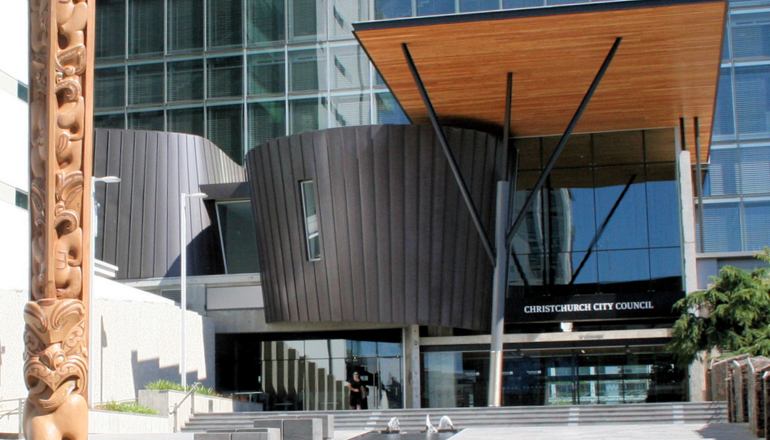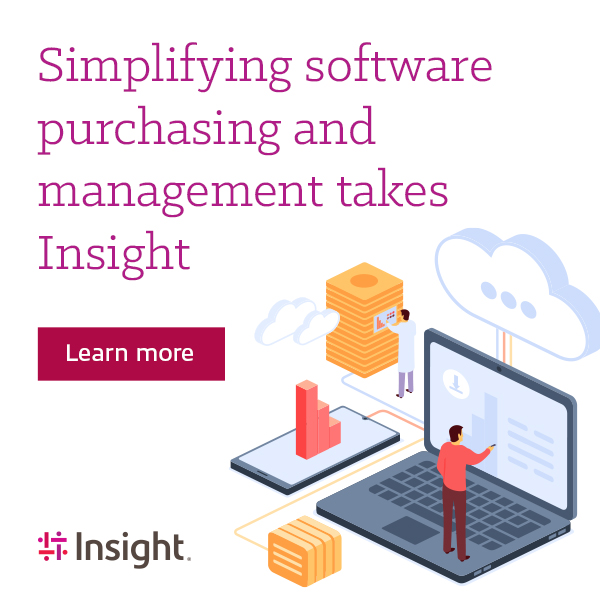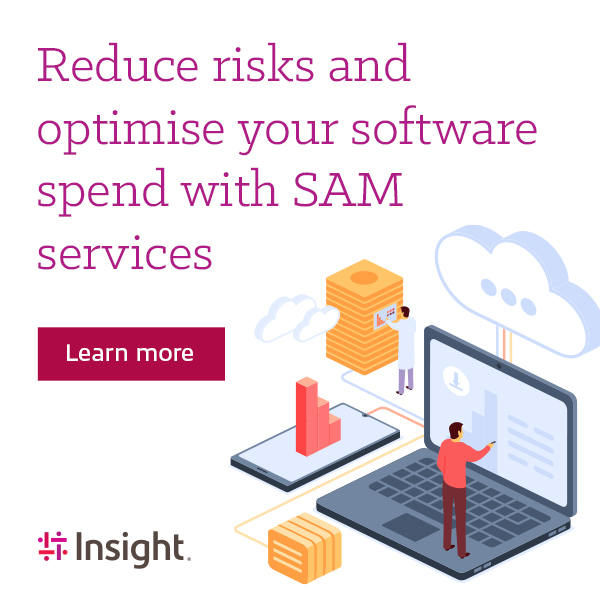Article Why modern organisations should be viewing FinOps and IT Asset Management through the same lens
According to Gartner, through 2024, 60% of enterprises will underestimate their cloud infrastructure and platform services consumption rates, leading to higher costs and missed opportunities for savings.
By Insight Editor / 7 Dec 2022 / Topics: Software Asset Management (SAM) Software Cloud

Organisations have traditionally relied on the discipline of IT asset management to monitor and manage their IT spend – a set of processes and practices for ensuring assets are efficiently deployed, maintained, kept up to date and securely disposed of when required.
Now, as organisations become increasingly dependent upon cloud, controlling spend is also becoming a critical priority. While shifting to the cloud can lower overall IT spend, this hasn’t necessarily been the reality for many businesses, and it’s not uncommon for organisations to be paying too much.
According to Gartner, through 2024, 60% of enterprises will underestimate their cloud infrastructure and platform services consumption rates, leading to higher costs and missed opportunities for savings.1
Why is controlling cloud spend so challenging?
There are several key reasons why controlling cloud spend is so difficult:
- Non cloud-native applications
- Ideally, when an existing on-premise application needs to be moved to the cloud, it should be re-built to ensure it is fully optimised for a cloud environment. However, in the rush to digitalise, many organisations simply take existing solutions and shift them to the cloud, which makes their cloud services more expensive.
- Developer autonomy in cloud usage
- In many organisations, developers are responsible for how and where cloud is consumed. The fastest and easiest way to develop an application may also be the most expensive. Often, developers simply aren’t aware of the cost-implications of how and where they are utilising cloud services, which can result in significant ‘bill shock’ for the business.
- Lack of visibility
- Many organisations also lack visibility over their cloud spend and are simply unaware of how or where the costs are spiralling. As IT departments become more service-led business functions, it’s imperative that cloud – and other IT costs – are able to be attributed to a cost-centre. This requires having the right measurement tools and processes in place.
- Changing management models
- Traditional financial management approaches to IT finance and procurement has limitations when it comes to cloud. In the past, IT infrastructure would require capital planning and quarterly budgeting. Now, organisations need to monitor their cloud spend on a granular and ongoing basis. According to IBM, “in a new hybrid cloud environment, financial management becomes an integrated function of the business’s economic decision-making. The old siloed way of working between infrastructure, development, and IT finance teams no longer works.”2

How can FinOps help?
FinOps is a new approach to cloud financial management which has emerged, predominantly, as a solution to controlling cloud spend.
It has several core components:
- Visibility and insight
- FinOps is about having the right tools and systems in place to measure and report on cloud consumption – so there are no surprises at the end of the month.
- Regular optimisation
- FinOps is inherently agile, and as technology changes constantly, organisations must be prepared to review and update their management approach to ensure it is always delivering what the business needs.
- Processes and procedures
- Most importantly, with FinOps, the organisation puts new processes and procedures in place which define how and where cloud is to be consumed – with the onus on developers to be particularly mindful of their cloud spend. This can include processes for the authoring of code, tagging, linking and much more.
- Culture and habits
- FinOps is also about establishing a new culture and approach within the organisation, and driving new habits around technology and how it is used.
With FinOps, optimising commercial spend may involve negotiating contract terms with hyperscale cloud providers; scaling agreements up or down; or effectively pre-planning for a workload migration.
How is FinOps similar to IT asset management
Commercial and consumption cost optimisation
Both FinOps and IT asset management are designed to optimise an organisation’s IT spend in two specific areas: commercial and consumption.
With FinOps, optimising commercial spend may involve negotiating contract terms with hyperscale cloud providers; scaling agreements up or down; or effectively pre-planning for a workload migration.
With IT asset management, it may involve merging agreements to achieve economies of scale; selecting optimal software license models to match appropriate technology use cases; or investing in software publisher expertise to support with negotiation and contracting.
From a consumption point of view, FinOps is typically focused on things like turning off unused resources, introducing scheduling, or – in more complex scenarios – establishing an organisational tagging and reporting strategy, or implementing workload right-sizing. At advanced levels, it may involve application redesign or refactoring.
From a consumption control perspective, IT asset management typically involves preventing software license purchases where existing software can be re-harvested; recommending employees use cheaper software that has been approved by the business; reducing unlicensed software to reduce the risks associated with software compliance audits, or making application design decisions that are licence-optimised.
Enabling ‘charge-back’
As IT shifts to become more of a ‘service’ provided to the business, it’s becoming increasingly important for IT spend to be itemised and ‘charged back’ to departments within the organisation. Where ‘charge back’ is not, or only partially, supported, it’s still important to be able to show where costs are incurred, so the business can track where consumption is taking place, and at what magnitude.
Both IT asset management and FinOps have the ability to provide the organisation with granular visibility to support this. With IT asset management, this typically involves assigning software and hardware to end users through a manual ‘assignment’ process which can be facilitated by IT asset management tools. In FinOps, the discipline is called ‘tagging’. In both cases, strategies, policies and supporting business processes need to be defined for it to be effective.
Enhanced collaboration
Ideally, both IT asset management and FinOps should promote better collaboration between the business and technical stakeholders. Both disciplines are heavily integrated into numerous existing business processes. It’s only through delivering effective reporting and supportive outcomes to inter-dependant stakeholders that they will be valued and sustained.
When operating together, FinOps and IT asset management can provide businesses with a very seamless and comprehensive view of their technology infrastructure. A consolidated view can also offer the organisation a single layer of governance around a framework that’s designed to achieve a united outcome.
So, why aren’t more organisations taking a consolidated view of FinOps and IT asset management?
It has to be acknowledged here that there are certainly some differences in FinOps and IT asset management:
- FinOps is cloud focused and isn’t at all about optimising physical, on-premise software or hardware – which is a key focus of IT asset management.
- FinOps tends to be focused on established infrastructure or platform cloud assets, and while it does support tagging, its focus is often more reactive than proactive.
- FinOps necessitates measuring consumption in minutes and hours, whereas IT asset management is usually measured in licensing or purchasing cycles and triggered by opportunities to right-size.
- IT asset management is often siloed. Rarely do IT asset management and DevOps teams interact.
That said, in essence, the overarching principles of both FinOps and IT asset management are very closely aligned – and it makes a great deal of sense for modern organisations to start viewing them through the same lens.
Both disciplines seek to help the business deliver an optimal return on investment for IT spend, and both provide granular information that’s designed to help IT operations and give the business better visibility of their IT spend.
When operating together, FinOps and IT asset management can provide businesses with a very seamless and comprehensive view of their technology infrastructure. A consolidated view can also offer the organisation a single layer of governance around a framework that’s designed to achieve a united outcome.
How can Insight help?
Insight has extensive experience in both FinOps and IT asset management. Our expert team can help you establish the processes and framework you need to optimise your spend and improve your return on your technology investment – both on-premise, and in the cloud.
Our FinOps expertise contributed to Gartner ranking us as a ‘visionary’ in its most recent Software Asset Management Managed Services Magic Quadrant (which covers FinOps).

Don’t know where to start? If you’re interested in learning more about how your business can consolidate its approach to FinOps and IT asset management, please get in touch.
1Gartner, Magic Quadrant for Software Asset Management Managed Services, July 2022
2IBM, Increasing cloud costs: CIO Guide, August 2022
3Gartner, Magic Quadrant for Software Asset Management Managed Services, July 2022








